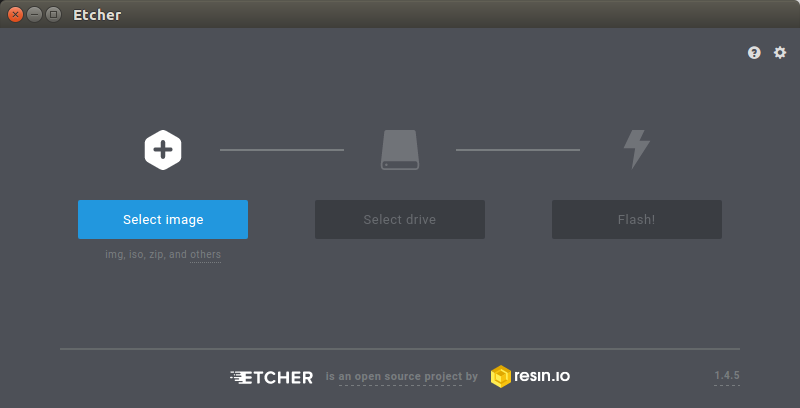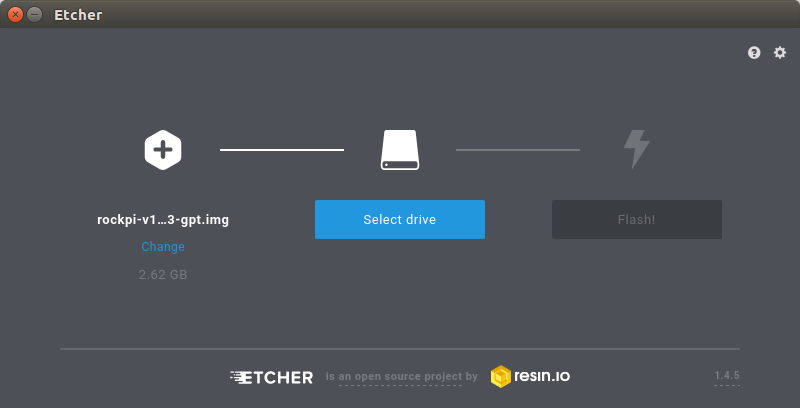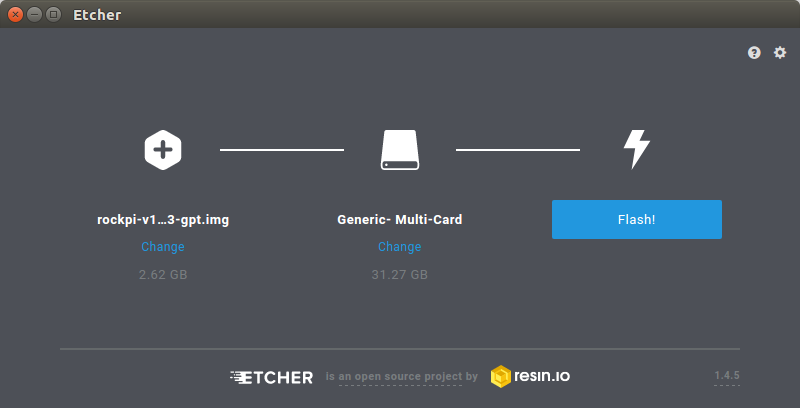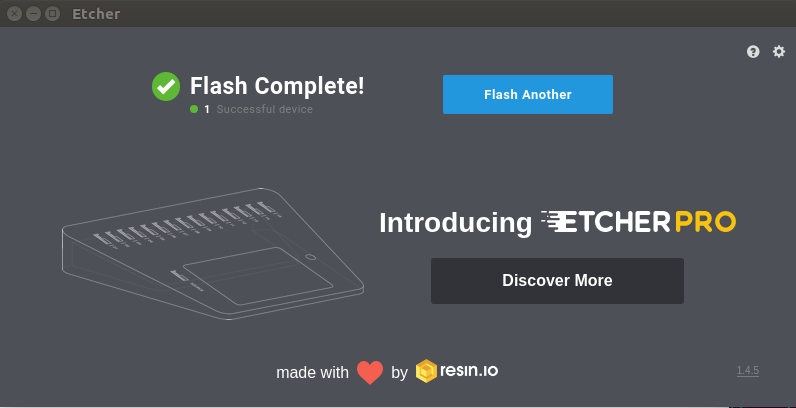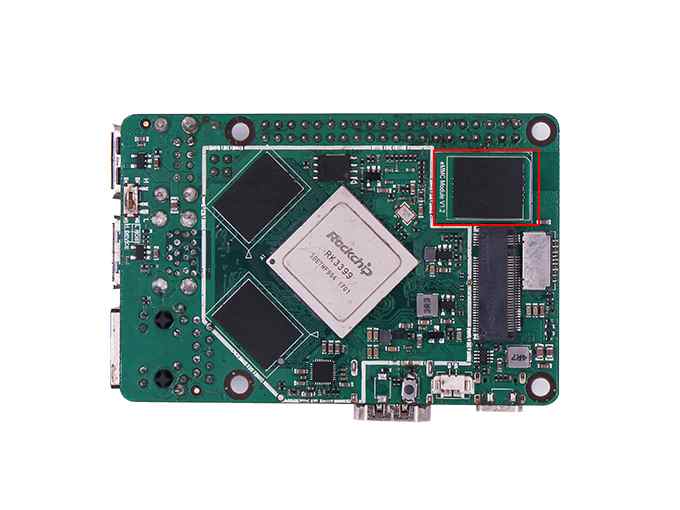Rock4/getting started
Contents
[hide]This guide is designed for ROCK 4 series. The purpose is to learn about the ROCK 4 board as well as how to prepare and set up for basic use. The ROCK 4 series has 7 models for now and the difference are trivial from the usage point of view. When you get a board, you need to know which ROCK 4 model it is and which hardware version it is. The information is printed in the top side of the board. We will introduce the board information as much as possible.
Which ROCK (Pi) 4 Model I have
Currently there are 7 models of ROCK 4 on the market and all supported by us:
- ROCK (Pi) 4A and 4B(2018)
- ROCK (Pi) 4C(2020)
- ROCK (Pi) 4A Plus and 4B Plus(2021)
- ROCK (Pi) 4C Plus(2022)
- ROCK 4 SE(2022)
ROCK or ROCK Pi
When first introduced in 2018, the name was ROCK Pi 4. In 2022, Radxa team decide to remove the Pi in the name because some people think ROCK Pi is the brand, but actually Radxa is the brand name, ROCK Pi is the product line name. The full name for 4C Plus should be Radxa ROCK 4 Model C Plus. (Note ROCK is always in upper case.) Since the ROCK Pi 4 is widely used already, all the content on the internet can not be changed immediately. So both ROCK Pi 4 and ROCK 4 refer the same product, the model number is what the users should pay attention when choosing images or ask for support.
Removable or none removable eMMC
eMMC is an embedded storage chip, like the SSD but in a very small form factor, eMMC has better performance than the best microSD card and usually has better life time.
- Removable eMMC, or eMMC module, is to mount the eMMC chip on another PCB board and connects to the main board via a B2B(board to board) connector, user can have multiple eMMC modules and change as they like. The eMMC module can also be installed image, read on PC with eMMC to uSD adapter or USB3 eMMC reader just like the microSD cards. ROCK (Pi) 4A, 4B, 4C, 4 SE, 4C Plus support eMMC module. More technical info about eMMC module can be found on the eMMC module page
- None removable eMMC, or on board eMMC, means the eMMC chip is soldered on the main board, user can not remove it, ROCK (Pi) 4A Plus, 4B Plus use on board eMMC.
What you need
Necessary
- ROCK (Pi) 4 main board
- ROCK (Pi) 4 any model
- One of the Storage media below:
- microSD card, for any ROCK (Pi) 4 model, larger than 8GB.
- eMMC Module, for removable eMMC ROCK 4 model only, larger than 8GB with eMMC-to-microSD converter board or USB eMMC reader.
- Power supply
- QC/PD capable ROCK 4, ROCK 4A, 4B, 4C, 4A Plus, 4B Plus, 4 SE
- The QC/PD capable ROCK (Pi) 4 is powered by USB Type C port and supports a wide range of input voltage, from 6V to 12V. The power adapter can be USB Type-C PD 2.0 with 9V/2A, 12V/2A protocol compatible, or Quick Charge 2.0 9V/2A, 12V/2A compatible. A dummy 9V or 12V power adapter with USB C tail will also work. Warning: 9V/12V USB C dummy power adapter is dangerous to other 5V only devices, don't mix them.
- If the power adapter is PD/QC compatible, the USB power cable must support USB data communication(USB 2.0 or 3.0) between the board and the power adapter, or the power adapter will not output desired voltage wanted by the board.
- Note: We don't suggest using a 5V only USB C power adapter on QC/PD capable ROCK (Pi) 4. The board may boot but it will cause stability issue once the system load rises.
- 5V only ROCK (Pi) 4C Plus
- For ROCK 4C Plus, it supports USB Type C 5V input only, a 5V/3A power adapter is recommend for normal usage. A 5V/5A power adapter is recommend for a full heavy usage such as connecting power hungry USB device(USB HDDs for example) on all USB ports.
- Use QC/PD power adapter on ROCK (Pi) 4C Plus is also fine since there is no voltage negotiation and the power adapter will output 5V by default. No worries to damage the 4C Plus.
- QC/PD capable ROCK 4, ROCK 4A, 4B, 4C, 4A Plus, 4B Plus, 4 SE
- USB Keyboard and Mouse
- With four USB-A connectors, ROCK (Pi) 4 can be equipped with a full sized keyboard and mouse.
- Monitor and display cable
- ROCK (Pi) 4A, 4B, 4A Plus, 4B Plus, 4 SE is equipped with a full sized HDMI connector. HDMI capable monitor is recommended.
- ROCK (Pi) 4C, is equipped with one micro sized HDMI connector and one mini size DP connector. HDMI or DP capable monitor is recommended.
- ROCK (Pi) 4C Plus, is equipped with two micro sized HDMI connector. HDMI capable monitor is recommended.
- HDMI EDID display data is used to determine the best display resolution. On monitors and TVs that support 1080p (or 4K) this resolution will be selected. If 1080p is not supported the next available resolution reported by EDID will be used. This selected mode will work with MOST but not all monitors/TVs.
Optional
- microSD Card Reader
- For flashing the image into microSD Card or eMMC Module.
- USB to TTL serial cable
- ROCK (Pi) 4 exports a dedicated serial console, which can access the low level debug message.
- USB Male A to Male A cable
- If you want write image on ROCK (Pi) 4 from USB OTG port or use ROCK (Pi) 4 as USB peripheral communication with other PCs you need an USB Male A to Male A cable to connect ROCK (Pi) 4 and PC.
- Ethernet cable
- ROCK (Pi) 4 supports Internet access via WIFI or Ethernet.
- An Ethernet cable is used to connect your ROCK (Pi) 4 to a local network and the Internet.
- Camera Module
- ROCK (Pi) 4 supports camera function.
- LCD Module
- ROCK (Pi) 4 supports LCD display function.
- Audio cable
- Audio can be played through speaker or headphones using a standard 3.5mm jack.
Features
| Model | ROCK (PI) 4A | ROCK (PI) 4B | ROCK (PI) 4C | ROCK (PI) 4A Plus | ROCK (PI) 4B Plus | ROCK 4 SE | ROCK (PI) 4C Plus |
|---|---|---|---|---|---|---|---|
| Processor | 64bits hexa core processor Rockchip RK3399 Dual Cortex-72, frequency 1.8GHz with qual Cortex-A53, frequency 1.4GHz Mali T860MP4 gpu, support OpenGL ES 1.1/2.0/3.0/3.1/3.2, Vulkan 1.0, Open CL 1.1 1.2, DX11. |
64bits hexa core processor Rockchip OP1 Dual Cortex-72, frequency 2.0GHz with qual Cortex-A53, frequency 1.5GHz Mali T860MP4 gpu, support OpenGL ES 1.1/2.0/3.0/3.1/3.2, Vulkan 1.0, Open CL 1.1 1.2, DX11. |
64bits hexa core processor Rockchip RK3399-T Dual Cortex-72, frequency 1.5GHz with qual Cortex-A53, frequency 1.0GHz Mali T860MP4 gpu, support OpenGL ES 1.1/2.0/3.0/3.1/3.2, Vulkan 1.0, Open CL 1.1 1.2, DX11. | ||||
| Memory | LPDDR4 64bit dual channel LPDDR4@3200Mb/s, 1GB/2GB/4GB optioal | ||||||
| Storage | eMMC connector μSD card (μSD slot supports up to 256 GB μSD card) M.2 SSD (M.2 connector supports up to 2T M2 NVME SSD) |
on board eMMC with up to 128GB variant available μSD card (μSD slot supports up to 256 GB μSD card) M.2 SSD (M.2 connector supports up to 2T M2 NVME SSD) |
eMMC connector μSD card (μSD slot supports up to 256 GB μSD card) M.2 SSD (M.2 connector supports up to 2T M2 NVME SSD) |
eMMC connector μSD card (μSD slot supports up to 256 GB μSD card) | |||
| Display | Standard HDMI 2.0 up to 4k@60 MIPI DSI 2 lanes via FPC connector HDMI and MIPI DSI can work at the same time, support mirror mode or extend mode. |
Mini DP up to 1440P@60 Micro HDMI 2.0 up to 4k@60 MIPI DSI 2 lanes via FPC connector HDMI and DP can work at the same time. |
Standard HDMI 2.0 up to 4k@60 MIPI DSI 2 lanes via FPC connector HDMI and MIPI DSI can work at the same time, support mirror mode or extend mode. |
One Micro HDMI 2K up to 1440P@60 One Micro HDMI 4K 2.0 up to 4k@60 MIPI DSI 4 lanes via FPC connector Only two of HDMI 2k, HDMI 4K and MIPI DSI can work at the same time. | |||
| Audio | 3.5mm jack with mic HD codec that supports up to 24-bit/96KHz audio. |
3.5mm jack HD codec that supports up to 24-bit/96KHz audio. | |||||
| Camera | MIPI CSI 2 lanes via FPC connector, support up to 800 MP camera(1mm pitch connector). | MIPI CSI 2 lanes via FPC connector, support up to 800 MP camera(0.3mm pitch connector). | |||||
| Wireless | None | 802.11 ac wifi BT 5.0 with on board antenna |
None | 802.11 ac wifi BT 5.0 with on board antenna |
802.11 ac wifi BT 5.0 with external antenna | ||
| USB | USB 3.0 OTG X1, hardware switch for host/device switch, upper one USB 3.0 HOST X1, dedicated USB 3.0 channel, lower one USB 2.0 HOST X2 | ||||||
| Ethernet | GbE LAN | GbE LAN with Power over Ethernet (PoE) support additional HAT is required for powering from PoE |
GbE LAN | GbE LAN with Power over Ethernet (PoE) support additional HAT is required for powering from PoE | |||
| IO | 40-pin expansion header 2 x UART 2 x SPI bus 3 x I2C bus 1 x PCM/I2S 1 x SPDIF 2 x PWM 1 x ADC 6 x GPIO 2 x 5V DC power in 2 x 3.3V DC power in | ||||||
| Others | RTC RTC battery connector for time backup(optional) |
RTC None | |||||
| Power | USB PD, support USB Type C PD 2.0, 9V/2A, 12V/2A. Qualcomm® Quick ChargeTM: Supports QC 3.0/2.0 adapter, 9V/2A, 12V/1.5A |
USB C 5V/3A | |||||
| Size | 85mm x 54mm | ||||||
Starting the board for the first time
ROCK (Pi) 4 can be started with eMMC or μSD Card. Now, you are presented with two options when installing your new operating system onto your ROCK (Pi) 4.
Prepare
- Booting system with microSD Card
Insert the microSD Card into microSD Card Reader, which connects to host computer. The picture below shows.
(add microSD Card and microSD Card Reader picture)
- Booting system with eMMC module
Insert eMMC Module into eMMC to μSD card converter board. Insert the converter board into μSD Card Reader, which connects to host computer. The picture below shows.
(add eMMC, eMMC to μSD Module and μSD Card Reader picture)
If you do not have an eMMC to μSD card converter board, you can also first install a linux system to a μSD Card and then use the running μSD System to install the desired system to the eMMC card with the eMMC card already inserted into the ROCK (PI) 4. See Rockpi4/install/eMMC.
Write Image
- Download the flash tool, etcher, from Downloads. Choose the right version for your host operation system. Here we operate on host Ubuntu 16.04.
- After unpacking the package, we run the tool by executing the command
$ ./etcher-etcher-electron-1.4.5-x86_64.AppImage
If you get an error message: "No polkit authentication agent found" you can try and start it with sudo, but do know that this is running the tool as root.
- In the etcher window, click Select image.
- In the etcher window, click Select Drive.
- In the etcher window, click Flash.
- In the etcher window, once it shows us Flash Complete! It is done and can be put into the ROCK (Pi) 4.
Boot
- Now insert system storage media into the socket on board.
- Connect the ROCK (Pi) 4 to your display with the HDMI cable. Ensure that the source for the display is switched to the HDMI port you are using.
- Connect the USB keyboard and mouse.
- Connect the power supply to the ROCK (Pi) 4. The board will begin to immediately. (You might not see the boot sequence, on Ubuntu Server you will see the login prompt)
- The Green LED should turn on then the Blue LED starts blinking, which means the Linux kernel is booting.
Wish you good luck!
Troubleshooting
- Post your issue on the forum: https://forum.radxa.com/c/rockpi4/Troubleshooting
Check if the ROCK 4 board is live(in maskrom mode)
By default, with no boot media or no bootable OS image, the ROCK 4 will boot into maskrom mode, which will use the USB OTG port(the upper USB 3.0 type A) to communicate with HOST PC. HOST PC should shows USB device with id 2207:330c
Check the serial console
By default, the ROCK 4 enabled serial console on the 40PIN GPIO header PIN8 and PIN10. Refer the Rockpi4/dev/serial-console guide for how to access serial console.

